J. Zhang
CSTrack: Enhancing RGB-X Tracking via Compact Spatiotemporal Features
May 26, 2025Abstract:Effectively modeling and utilizing spatiotemporal features from RGB and other modalities (\eg, depth, thermal, and event data, denoted as X) is the core of RGB-X tracker design. Existing methods often employ two parallel branches to separately process the RGB and X input streams, requiring the model to simultaneously handle two dispersed feature spaces, which complicates both the model structure and computation process. More critically, intra-modality spatial modeling within each dispersed space incurs substantial computational overhead, limiting resources for inter-modality spatial modeling and temporal modeling. To address this, we propose a novel tracker, CSTrack, which focuses on modeling Compact Spatiotemporal features to achieve simple yet effective tracking. Specifically, we first introduce an innovative Spatial Compact Module that integrates the RGB-X dual input streams into a compact spatial feature, enabling thorough intra- and inter-modality spatial modeling. Additionally, we design an efficient Temporal Compact Module that compactly represents temporal features by constructing the refined target distribution heatmap. Extensive experiments validate the effectiveness of our compact spatiotemporal modeling method, with CSTrack achieving new SOTA results on mainstream RGB-X benchmarks. The code and models will be released at: https://github.com/XiaokunFeng/CSTrack.
Enhancing Vision-Language Tracking by Effectively Converting Textual Cues into Visual Cues
Dec 27, 2024Abstract:Vision-Language Tracking (VLT) aims to localize a target in video sequences using a visual template and language description. While textual cues enhance tracking potential, current datasets typically contain much more image data than text, limiting the ability of VLT methods to align the two modalities effectively. To address this imbalance, we propose a novel plug-and-play method named CTVLT that leverages the strong text-image alignment capabilities of foundation grounding models. CTVLT converts textual cues into interpretable visual heatmaps, which are easier for trackers to process. Specifically, we design a textual cue mapping module that transforms textual cues into target distribution heatmaps, visually representing the location described by the text. Additionally, the heatmap guidance module fuses these heatmaps with the search image to guide tracking more effectively. Extensive experiments on mainstream benchmarks demonstrate the effectiveness of our approach, achieving state-of-the-art performance and validating the utility of our method for enhanced VLT.
Score-CDM: Score-Weighted Convolutional Diffusion Model for Multivariate Time Series Imputation
May 21, 2024Abstract:Multivariant time series (MTS) data are usually incomplete in real scenarios, and imputing the incomplete MTS is practically important to facilitate various time series mining tasks. Recently, diffusion model-based MTS imputation methods have achieved promising results by utilizing CNN or attention mechanisms for temporal feature learning. However, it is hard to adaptively trade off the diverse effects of local and global temporal features by simply combining CNN and attention. To address this issue, we propose a Score-weighted Convolutional Diffusion Model (Score-CDM for short), whose backbone consists of a Score-weighted Convolution Module (SCM) and an Adaptive Reception Module (ARM). SCM adopts a score map to capture the global temporal features in the time domain, while ARM uses a Spectral2Time Window Block (S2TWB) to convolve the local time series data in the spectral domain. Benefiting from the time convolution properties of Fast Fourier Transformation, ARM can adaptively change the receptive field of the score map, and thus effectively balance the local and global temporal features. We conduct extensive evaluations on three real MTS datasets of different domains, and the result verifies the effectiveness of the proposed Score-CDM.
Secrecy Capacity Analysis of 4-WFRFT Based Physical Layer Security in MIMO System
May 29, 2023



Abstract:The traditional information security based on cryptosystem is seriously threatened due to the exponential growth of computing capacity. In order to improve for the upper cryptosystem security, the secure transmission at the physical layer is introduced into the wireless communication system. However, considering the openness of wireless channel, the performance analysis of security wireless communication systems has become a hot issue in recent years. Due to the existence of the upper layer cryptosystem being cracked and the openness of wireless channel security problems, the Multiple-Input Multiple-Output (MIMO) technology increases the difference between channels, the development of its rich spatial degrees of freedom can greatly improve the channel capacity and achieve the purpose of enhancing the Physical layer security (PLS); On this basis, Weighted Type Fractional Fourier Transform (WFrFT) technology rotates and splits the constellation points of signals, it is equivalent to increasing the artificial noise to enhance the PLS. The Average security capacity is an important index to measure the PLS, Therefore, this paper deduces the Average security capacity in MIMO scenario and gives a specific closed expression when considering the channel correlation. By analyzing the expression, the increase of the number of MIMO antennas will improve the Average security capacity. When the estimated bias is 1 in 4-WFRFT, the Average security capacity will be significantly improved; the Average security capacity will reach the maximum value, thus enhancing the PLS.
AI-assisted Optimization of the ECCE Tracking System at the Electron Ion Collider
May 20, 2022Abstract:The Electron-Ion Collider (EIC) is a cutting-edge accelerator facility that will study the nature of the "glue" that binds the building blocks of the visible matter in the universe. The proposed experiment will be realized at Brookhaven National Laboratory in approximately 10 years from now, with detector design and R&D currently ongoing. Notably, EIC is one of the first large-scale facilities to leverage Artificial Intelligence (AI) already starting from the design and R&D phases. The EIC Comprehensive Chromodynamics Experiment (ECCE) is a consortium that proposed a detector design based on a 1.5T solenoid. The EIC detector proposal review concluded that the ECCE design will serve as the reference design for an EIC detector. Herein we describe a comprehensive optimization of the ECCE tracker using AI. The work required a complex parametrization of the simulated detector system. Our approach dealt with an optimization problem in a multidimensional design space driven by multiple objectives that encode the detector performance, while satisfying several mechanical constraints. We describe our strategy and show results obtained for the ECCE tracking system. The AI-assisted design is agnostic to the simulation framework and can be extended to other sub-detectors or to a system of sub-detectors to further optimize the performance of the EIC detector.
Roadmap on Signal Processing for Next Generation Measurement Systems
Nov 09, 2021
Abstract:Signal processing is a fundamental component of almost any sensor-enabled system, with a wide range of applications across different scientific disciplines. Time series data, images, and video sequences comprise representative forms of signals that can be enhanced and analysed for information extraction and quantification. The recent advances in artificial intelligence and machine learning are shifting the research attention towards intelligent, data-driven, signal processing. This roadmap presents a critical overview of the state-of-the-art methods and applications aiming to highlight future challenges and research opportunities towards next generation measurement systems. It covers a broad spectrum of topics ranging from basic to industrial research, organized in concise thematic sections that reflect the trends and the impacts of current and future developments per research field. Furthermore, it offers guidance to researchers and funding agencies in identifying new prospects.
Predicting Future Cognitive Decline with Hyperbolic Stochastic Coding
Feb 21, 2021
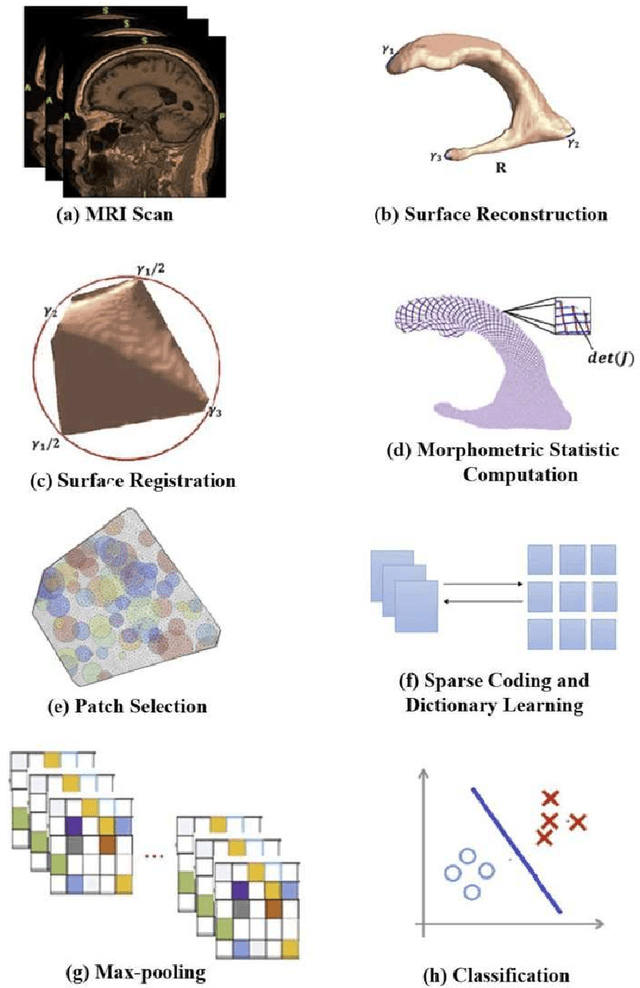

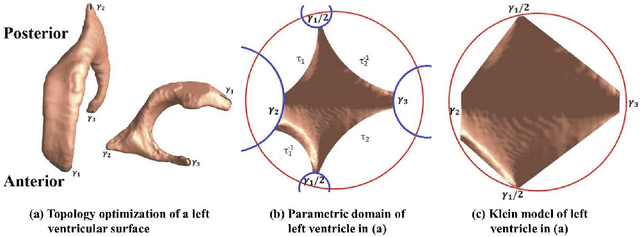
Abstract:Hyperbolic geometry has been successfully applied in modeling brain cortical and subcortical surfaces with general topological structures. However such approaches, similar to other surface based brain morphology analysis methods, usually generate high dimensional features. It limits their statistical power in cognitive decline prediction research, especially in datasets with limited subject numbers. To address the above limitation, we propose a novel framework termed as hyperbolic stochastic coding (HSC). Our preliminary experimental results show that our algorithm achieves superior results on various classification tasks. Our work may enrich surface based brain imaging research tools and potentially result in a diagnostic and prognostic indicator to be useful in individualized treatment strategies.
Deep Neural Network for Water/Fat Separation: Supervised Training, Unsupervised Training, and No Training
Apr 16, 2020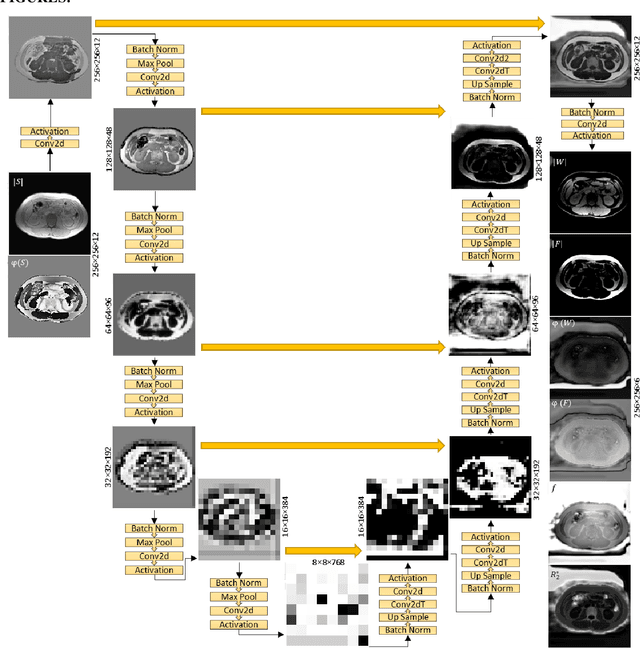
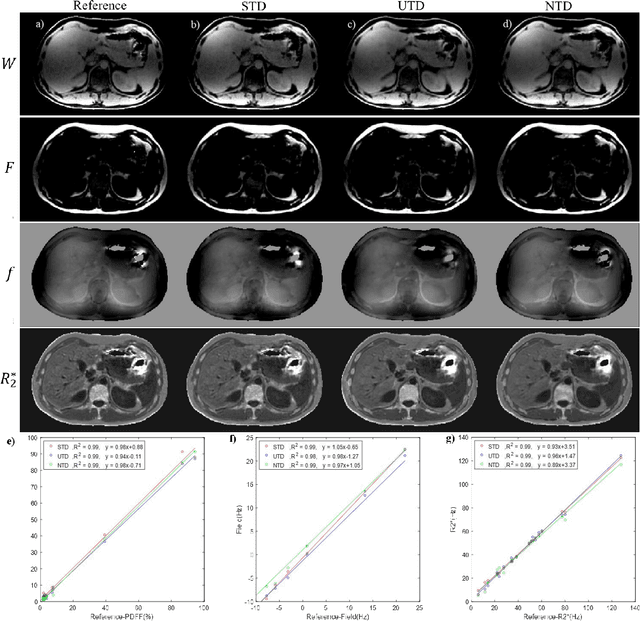
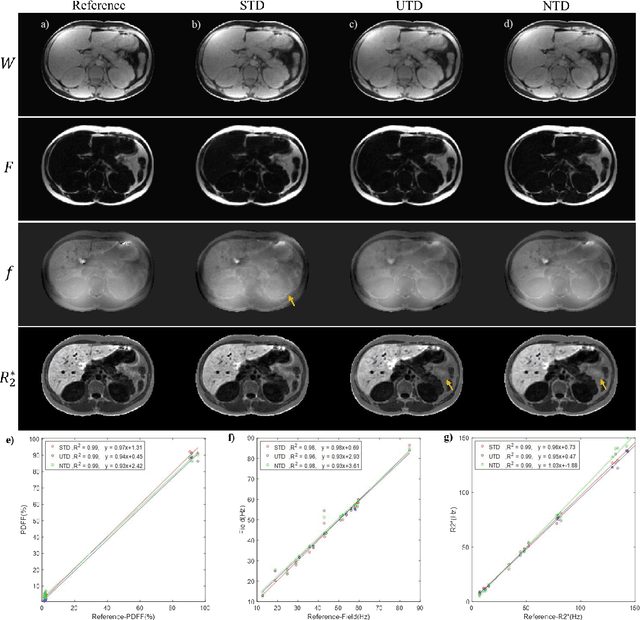
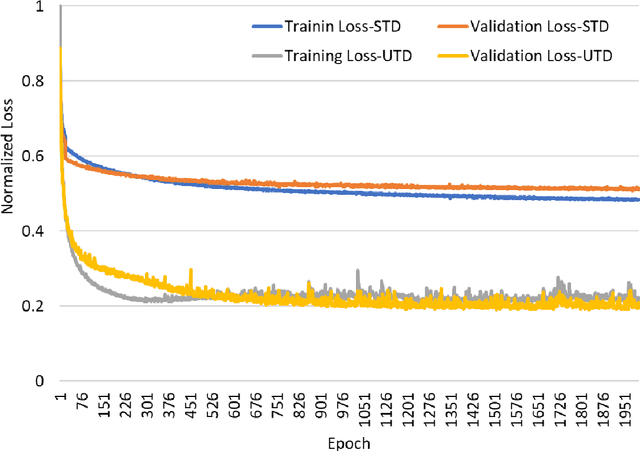
Abstract:Purpose: To use a deep neural network (DNN) for solving the optimization problem of water/fat separation and to compare supervised and unsupervised training. Methods: The current T2*-IDEAL algorithm for solving fat/water separation is dependent on initialization. Recently, deep neural networks (DNN) have been proposed to solve fat/water separation without the need for suitable initialization. However, this approach requires supervised training of DNN (STD) using the reference fat/water separation images. Here we propose two novel DNN water/fat separation methods 1) unsupervised training of DNN (UTD) using the physical forward problem as the cost function during training, and 2) no-training of DNN (NTD) using physical cost and backpropagation to directly reconstruct a single dataset. The STD, UTD and NTD methods were compared with the reference T2*-IDEAL. Results: All DNN methods generated consistent water/fat separation results that agreed well with T2*-IDEAL under proper initialization. Conclusion: The water/fat separation problem can be solved using unsupervised deep neural networks.
 Add to Chrome
Add to Chrome Add to Firefox
Add to Firefox Add to Edge
Add to Edge